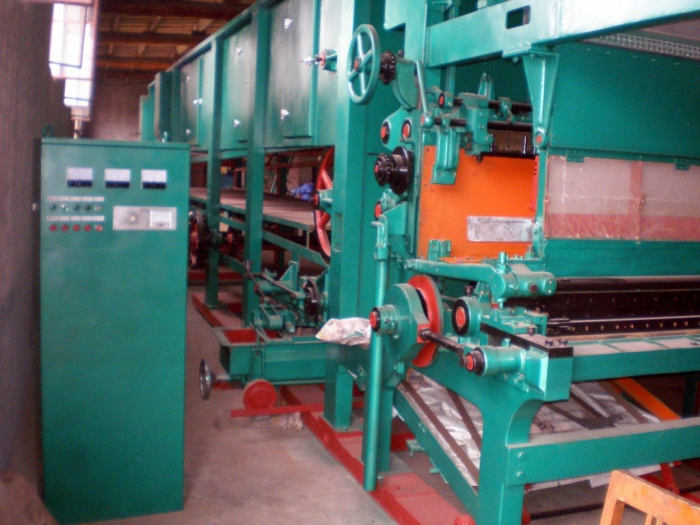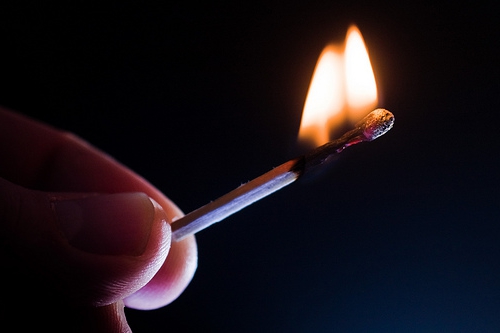 Matches are small sticks used to make fire, which are made of combustible material.
Matches are small sticks used to make fire, which are made of combustible material.
At the end they have an incendiary head. The indicated name comes from the old Russian word "matches", which means a wooden pointed stick.
However, there was another definition. Initially, this word called nails made of wood, which were used to make shoes, as a mounting of the sole to the head.
Nowadays, many may have a question about how to produce matches and how to organize your business on this. More on this later.
Main varieties
These products are divided, depending on what material they are made of, into:
- wooden (made of soft wood - linden, aspen);
- wax;
- cardboard.
By type of ignition, these types of matches are distinguished:
- Grater. This view is ignited on a special surface called a “grater”. Today in Russia they are the most common matches. Their release is 99% of all matches made.
- Besterless. They are ignited by friction against any surface.

Matches Production Technology
In this case, the following actions are carried out:
- At the initial stage of the manufacture of matches, logs of the required wood species are made. They paint the end faces with lime to avoid the process of decay.
- After this, the logs are cut into thin sheets, which are subsequently divided into blanks for this product (The usual match length is 42.5 mm, and its thickness is from 1.6 to 2.2 mm). This is done using special equipment.
- Then the match pieces are sent to chemical workshops. There they are impregnated with phosphoric acid, and then subjected to paraffin treatment, so as not to spoil.
- Then, the processed workpieces are dipped into a sulfur solution using a special matrix into which the sticks are inserted. As a result, match heads are obtained. And then they are dried using the same matrix, which is a two-meter tape.
While the items are drying out, matchboxes are made in a nearby workshop. They are made from huge rolls of cardboard, on which the drawing is initially printed, and subsequently the grater is applied. At the end of all these procedures, matchboxes are cut and bent.
And then, thanks to the air cyclone, they are fired at a special box-laying machine, so that later they can be sent to the match assembly for filling with the finished specified products. The number of pieces of this product in one package is set by the manufacturer. Then the filled boxes are packed in blocks of 10 and sent for sale.

The subtleties of business
To all of the above, we can add that there are about a hundred of all kinds of matches. They are distinguished by the degree of combustion, composition, color and size.
Expanding the production of matches, it is necessary to improve the technological process. The success of this business depends on this. You should also master new types of matches.
For example:
- Hunting. They differ from ordinary ones in that, in addition to the stick and head, they have an additional coating. Thanks to this, the match burns for a long time with a large flame. They are quite easily ignited in any weather.In comparison with the usual match, the hunter burns much longer.
- Storm This species does not have a head, but in the main part the coating is much thicker (in comparison with hunting ones). The ignition ability of them is very high due to the fact that the incendiary mass contains a lot of bertholite salt. These matches can light up in any weather (even in a twelve-point storm). They are mainly used by fishermen and sailors.
- Gas or fireplace. Their length is much longer (in comparison with ordinary matches). Their main purpose is to ignite the burners of gas stoves or fireplaces.
There are also thermal matches. They are able to give off so much heat that they can even solder. Signal matches are no less unique. They burn with a multi-colored flame. There are also photographic matches. They are used to create an instant flash. There are still souvenir and gift product data. In general, organizing the production of matches, the variety of goods is selected individually.
Technology features
This product has a fairly simple structure. It consists of a head and a wooden base. However, this does not mean that the technology for producing matches is too simple. There are several stages to creating them:
- The base is made of pine or aspen. To do this, take the bars from the tree, which are sawn into small saw cuts. You should also get rid of the bark. To make match straw, about 60% of the wood is needed.
- But the subsequent process is determined by the type of matches. If there is an interest in a square cross-section, then the veneer method must be applied, but if in the round, then a stamp method is needed. The first option will require the manufacture of a tape whose width is equal to the length of the match itself. Its thickness is equal to the parameter of the original product. Then the ribbons must be cut into match straws, which are further cut into individual elements. The length of the line for the production of matches is 18 meters, and the height is 7.5 meters. Enough 8 hours to produce 10 million matches. By the method of stamping from the bars that are sent to the machine, the blanks are made.
- Further, the base of the match is saturated with a fire-fighting solution, after which one of its ends is subjected to paraffin treatment so that it ignites without difficulty.
- After this, a double layer of glue is used to form the head, as well as a protective coating against external influences.
- When the impregnations are completed, the matches are dried in a special machine for at least an hour, and then they are polished and sorted.
- Upon completion of these procedures, these products are packaged: gluing boxes, internal and external, applying a grater surface to the sides, gluing labels. These actions are important. The length of the box for ordinary matches is five centimeters. These parameters depend on the type of manufactured product. Matches are packed in boxes and wrapped in paper on a special apparatus.

Production Line
The plant for the manufacture of these products must have several basic machines at its disposal, such as:
- on the application of phosphorus;
- to create boxes;
- by mixing chemical elements;
- automatic continuous equipment for the production of matches;
- a selecting device;
- Dryer;
- cutting unit.
The entrepreneur is already acquiring any other minor devices according to his individual desire. All of the specified equipment for the production of matches will cost on average from 19 to 23 million rubles. Although you can reduce costs if you remove the stages of straw production (it is just bought). And of course, the manufacture of matches and their storage requires special rooms in which all will be strictly observed fire safety standards.
Raw materials
In this case, several materials will be required. As a raw material, technical potassium and sodium dichromate, copper sulfate, and solid paraffin are suitable.Aspen round timber will cost from 1.5 to 2.5 thousand rubles per 1 cubic meter.

Staff
To organize a successful production of matches will require more than one pair of working hands. To establish the release of these products, at least ten people are needed. They will include a manager, workers, movers, technologists, line operators. The number of personnel depends on the volume of production.
Subtleties of sale
To organize the successful implementation of matches, it is necessary to establish contacts with firms involved in the procurement of these products. In their role are simple or specialized stores, supermarkets, wholesale bases. It does not hurt to think about advertising, as well as about their own buyers with average income.

Tip
In the production of matches, it is necessary to monitor the condition of the equipment used (keep it clean), and you should also clean the premises (twice a day). The sewer well is equipped with a sump. It must be cleaned at the end of cleaning.
The rules state that the transportation of incendiary mass through the spreading department, drying apparatus, and warehouses of the specified products is strictly prohibited, as well as the transfer of phosphorus mass through equipped rooms. Preparation of machines for work and their repair must be done, provided that there are no matches in them. Clothing factory workers should be saturated with a fire retardant solution.
